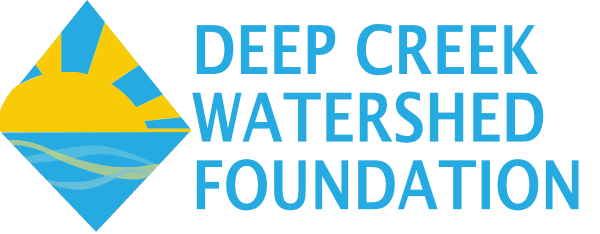Watershed Precipitation Monitoring
The United States Geologic Survey (USGS) continuous flow monitoring station at North Glade Run, in addition to recording stream flows, also records precipitation. Both the flows and precipitation are available real time on the USGS webpage for the site. The power plant records precipitation, but the values are not available until after the end of the year. Recording precipitation data could be added to the Cherry Creek flow gauge and the Hoyes Run flow gauge if sponsors could be found to support it. Then the watershed would be bracketed with reliable precipitation data. Goal 6: Prevent erosion and sedimentation to the greatest extent possible to protect water resources from increased sediment loading and associated water quality problems. Objective One: Identify the causes and mechanisms of erosion and sources of sediment within the Deep Creek watershed, including the movement of sediment in the lake.
Tributary Stream Sediment Load Migration
All of the lake tributary streams in the watershed are sources of sediment. We are looking for projects in the watershed to reduce the sediment load. With the tributary stream sediment loads measured a deposition rate for each stream could be determined. Tributaries with large sediment loads could be evaluated to determine the practicability of trapping the sediment before it enters the lake. When Maryland executed the lake Buy-Down process a buffer was retained around the tributary discharges into the lake. These could be exploited to erect sediment traps in the tributary streams. Private contractors could be employed to provide barges capable to land mini-excavators to create and maintain the traps. The traps are simply dug out places in the stream bed sized to retain a year’s sediment deposition. The contractor will be responsible for disposing of the recovered material.
Sheet Flow Sediment Discharges
Areas of extreme sheet flow sedimentation have been identified in the DNR Sediment Study. Some of these could be addressed by sediment traps parallel to the shoreline. These would be constructed and maintained in a similar fashion to conventional sediment traps.
Existing Shoreline Sedimentation
Existing shoreline sedimentation and wind/wave erosion apparently do not impact overall lake turbidity, but the tributary sediment load does. However, the existing deposition interferes with public enjoyment of the shoreline. A method for mitigating the sediment would be to lower the lake level to the lower rule band early in winter and maintain it there until March or April to ensure a full pool is reached by May. With a lower pool during winter some of the submerged aquatic vegetation in the exposed mud may perish from the freeze during winter. Sheet flow from the shoreline will eventually wash the sediment from the dock areas into deeper water. There are minimal costs associated with this plan, and no permits would be required. In time, if dredging is indicated in the channels it will be easier than dredging along the shoreline.
Calculate recharge rate into the lake using a year’s worth of level data, power plant operating condition, watershed rainfall, stream flow data
When the power plant is not discharging any inflow will increase the water level. Any loss will decrease the water level. (Inflow – Outflow = Change in water level). At night time, when the power plant is not running, evaporation will be minimal.
A daily comparison between daylight recharge when the plant is not drawing water with the nocturnal recharge will yield an indication of the evaporation. With the use of the stage-storage diagram from the Water Budget Model (WBM) by Century Engineering, Inc. (CEI) the rate of change in storage can be inferred. If a year’s worth of level data, watershed rainfall, stream flow data, and ground water recharge were to be incorporated into CEI’s WBM a traditional water budget model a reliable predictive could be created by the Maryland Power Plant Research Program (PPRP), or the Maryland Geologic Survey (MGS) from CEI’s WBM. Foundation staff have used a simplified version to make models of the 2012, 2019, and 2020 to track changes in how lake levels compared to the mandated releases in the permit.
Since the United States Geologic Survey (USGS) began collecting precipitation records in 2018, and Lake levels and temperature records in August of 2020, the WBM will be an effective tool to predict the effects of the programed releases
